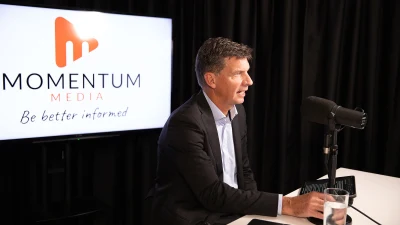ETFs: a client solution and business asset


BlackRock Australia’s Jonathan Howie explains why ETFs can work in the best interests of clients and financial advisers.
According to the July BlackRock ETP (exchange-traded product) Landscape report, as at the end of July, globally, assets held in the sector hit a new high of almost US$2.2 trillion, spread among 4901 products.
Those extraordinary figures represent a tripling in the global assets under management of ETPs (an umbrella term that includes the more familiar, and most numerous, exchange-traded funds – or ETFs) in the five years since 2008.
While only a small fraction of the global asset pool, the Australian ETF market has without a doubt been on a similar growth trajectory.
According to ASX figures, between July 2008 and July 2013, Australian ETP assets grew from $1.4 billion to $8.4 billion. This equates to a growth rate of more than 40 per cent per annum.
The recent rapid take-up of ETFs in Australia, as elsewhere in the world, has been driven by multiple factors including:
A post-GFC investor backlash against ‘benchmark-hugging’ active fund managers;
The consequent demand for low-cost, transparent investment products;
A growing realisation amongst investors that ETFs can provide an efficient vehicle to implement asset allocation designs and/or express short- to medium-term market views; and,
The establishment of robust historical data showing that ETFs can deliver ‘true to label’ performance over a range of time periods.
As the benefits of the products have become obvious to both institutional and retail Australian investors, a steadily increasing band of financial planners have also been happy to include ETFs in the client investment-solution armoury.
The introduction of the Future of Financial Advice (FOFA) regime, too, has fuelled further interest from financial planners in ETFs as products that meet the transparent, low-cost, commission-free standards the legislation has set for the profession.
Of course, much has already been written about the potential role of ETFs in client portfolios, and the regulatory push applied to the products by FOFA.
Less-discussed, however, is the transformational effects ETFs can create for advisory businesses themselves.
While ETFs must, first-and-foremost, be recommended only in the ‘best interests’ of their clients – which, given the characteristics described above, is perhaps easier to show with ETFs than with less transparent products – anecdotal experience suggest many financial planners who use ETFs are experiencing unexpected qualitative and bottom-line business benefits.
The advisory business upside of ETFs can probably best be attributed to two fundamental areas: better client engagement around investment strategies and implementation, and improved back-office efficiencies.
Measuring the quality of ‘client engagement’ is, naturally, harder than quantifying back-office costs but it is, I believe, just as real a benefit.
And, based on feedback received from financial planners who have introduced ETFs into the mix, the quality and clarity of the client conversation improves in several ways.
For example, because they offer access to clearly-defined markets, ETFs can simplify the task of explaining asset allocation and diversification to clients while also showing how to implement these investment ideas in a low-cost, transparent way – opening up vistas, such as emerging markets, that may not have been possible previously.
Furthermore, in times of market volatility, or merely when reporting in general, ETFs allow advisers to steer the client conversation back to these core asset allocation decisions rather than focusing on the performance of, say, an underlying portfolio of 50 stocks.
If, for instance, clients were exposed to the US market with a concentrated basket of shares, the reasons for holding each stock must be clearly articulated to every client, every reporting season.
On the other hand, there is less time wasted and just as much value gained by reiterating to clients why they have exposure to the S&P 500, or emerging markets or Australian small caps or any other ETF-mediated market sector.
As well as their time-saving attributes, ETFs also add to the timeliness of client reporting. The constant market visibility of ETF data enables advisers to provide up-to-the-minute performance reporting whenever the client desires, as opposed to waiting for quarterly reports from fund managers.
From the comments advisers have relayed, the availability of information (including disclosure of underlying holding) of ETFs has proved useful in reinforcing trust with clients, an element critical to the advisory industry as a whole.
ETFs can also enhance relationships with clients by expanding and/or clarifying the range of investment services advisers provide.
As explained above, ETFs can help advisers develop a clearly-articulated and easily-implemented approach to asset allocation, which may include building in-house models.
But, as BlackRock Australia Head of Retail, Mark Oliver, recently explained: “Advisers now have all the tools they need to more closely reflect the themes they’re discussing with clients in the portfolios they’re building – and in a dynamic fashion.”
So advisers can consider mixing active, single stocks and ETFs together to create blended solutions for clients – which in effect can offer more opportunities for higher levels of engagement with their clients.
And if, for example, a client has a short-to-medium term view on emerging markets, an adviser can position the portfolio in line with this view via ETFs, while also considering the risks and benefits of any such move.
According to Mark Oliver, the net outcome of this portfolio blending is a clear demonstration of value to the client.
Bearing this out is the fact that increasingly, Australian advisers and investors are beginning to use ETFs in this dynamic ‘thematic’ manner.
The latest flow data for the Australian iShares business shows that to the end of August 2013 almost 60 per cent of new money flowed into international equities ETFs, a marked turnaround in investor behaviour.
ETFs, then, if appropriately introduced into an advisory toolkit can lift the overall quality of the client offering – cementing relationships and lifting retention rates. But there’s more than just a ‘soft’ side to the ETF story for advisers.
ETFs can introduce hard, demonstrable benefits to advisory business operations. Some of these efficiency gains may be sheeted home to the quality improvements discussed previously.
For example, client-reporting conversations centred around ETF asset allocation settings should be shorter and more effective than line-by-line analysis of 50 shares – delivering time-saving scalability across the entire client-base.
Other efficiency gains are related more to the administrative simplicity of ETFs. Compare, say, the paper trail involved in maintaining a directly-held 20-stock Australian shares portfolio with the simple reporting mechanism (also available via platforms) of an ASX/S&P 20 ETF.
As advisory firms face more pressure than ever from regulatory imposts and institutional competition, any solution that enables them to continue providing high-level client service while improving profitability has to be considered.
Under these conditions it’s hardly surprising Australian financial planners (see case study) are turning to ETFs as one of those solutions that serve both their clients’ best interests and their business’s good health.
Case study: Why ETFs chimed for Bell
As with just about everybody, the GFC sounded a wake-up call for boutique financial advisory firm Bell Partners.
Unlike many others, however, Bell Partners wasn't content to hit the snooze button, hoping everything would return to normal at a later time.
Brett Taggart, Sydney-based representative of Bell Partners (which has offices also in Brisbane and Newcastle), says the GFC prompted a real change of direction for the firm, which was up until then running a fairly standard five-asset allocation model underpinned by active managed funds and direct equities (for Australian shares).
Taggart says in the wake of the crisis in 2008, Bell Partners performed a forensic investigation of its investment assumptions, quickly coming to the conclusion that the effort required to "build, manage and maintain" the existing model made it "not viable".
"We wanted to treat the cause, not the symptoms," he says.
"We realised that we couldn't control the markets but we could control our business and how clients experience our business."
And the treatment, Taggart says, pointed to some kind of passive investment solution.
"At that point ETFs had been around for a while ... the answer was sitting there staring us in the face," he says.
Bell Partners re-engineered its investment offering around ETFs (although the firm still provides traditional managed funds in a core/satellite framework if clients prefer), reducing the asset allocation models down to three.
"As advisers we can focus on adding value around asset allocation," Taggart says.
Clients, meanwhile, can also gain the benefits of lower costs and the "speed to market" of ETFs that allows Bell Partners to implement investment ideas exponentially faster than via either managed funds or "200 or so" discrete share portfolios.
Today, the firm has about 60 per cent of client money in ETFs, in iShares and others.
Almost five years since first introducing its ETF-centred approach, Taggart says Bell Partners business is humming efficiently.
The switch to an ETF investment model, he says, "has freed up our time to concentrate on where we can deliver true value".
"That's communicating with clients rather than sitting in front of computer screens," Taggart says.
"Our conversations with clients are better, they understand exactly what we're talking about and so they're making more informed decisions as well.
"It's allowed us to look at what's going right in the business, rather than worrying about what's going wrong in markets."
Jonathan Howie is a director and ETF specialist with BlackRock Australia.
Recommended for you
In this episode of Relative Return, host Laura Dew speaks with Steve Johnson, founder and CIO at Forager Funds Management, about the impact of human psychology on investing and whether fund managers can ever beat algorithms.
In this episode of Relative Return, host Laura Dew speaks with Daniel Bower, chief product officer at FinClear, and Bill Keogh, chief executive of Transact1 (a FinClear subsidiary) to discuss cash as an asset class.
In this episode of Relative Return, host Maja Garaca Djurdjevic is joined by shadow treasurer Angus Taylor to discuss the current state of the financial advice sector, the economy, the housing affordability crisis and more.
In this episode of Relative Return, host Laura Dew speaks with Andrew Mitchell, director and senior portfolio manager at Ophir Asset Management, about why he loves working in fund management and the lessons he’s learnt in a decade of running a firm.













